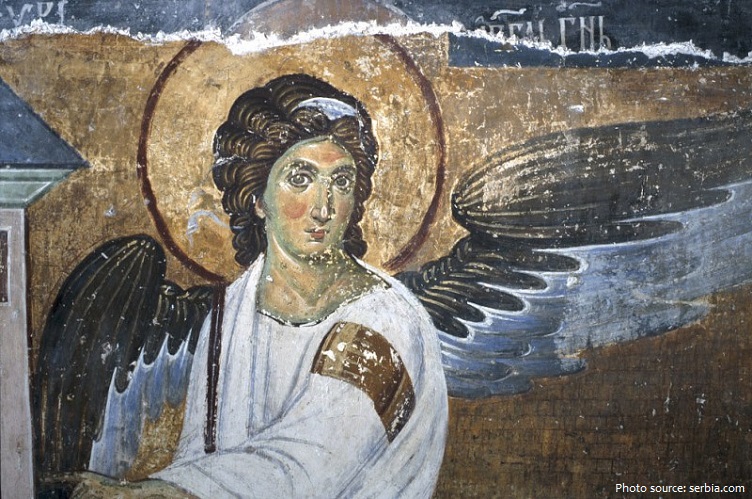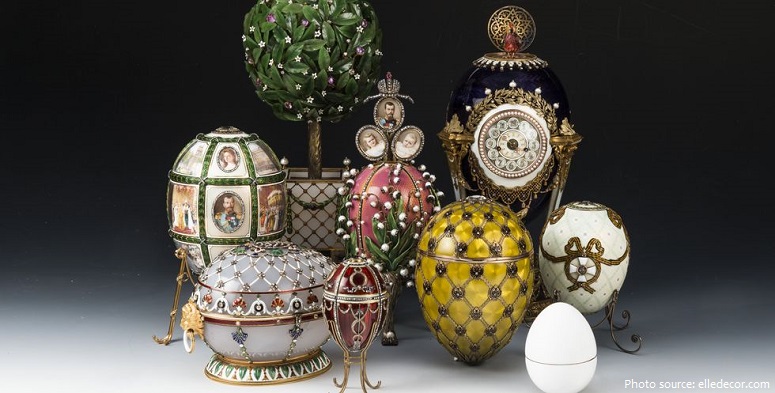
The Mona Lisa is one of the most valuable paintings in the world. It holds the Guinness World Record for the highest known insurance valuation in history at US$100 million in 1962. Although it is impossible to put a dollar amount on a 500-year-old painting, it is estimated that the Mona Lisa is worth nearly $1 billion.
White Angel is a detail of one of the best known frescoes in Serbian culture in the Mileševa monastery. It depicts the arrival of the myrrhbearers at the tomb of Christ on Sunday morning, after the events of the Crucifixion. Sitting on the stone is the Angel of the Lord dressed in a white chiton, whose myrrh-bearing arm shows the place of Christ’s resurrection, and his empty tomb. A picture of the White Angel of Mileševa was sent as a message in the first satellite broadcast signal from Europe to America after the Cuban Missile Crisis, as a symbol of peace and civilization.

50 engineers and designers, between 150 and 300 workers, 18,038 pieces of wrought iron and 2.5 million rivets were needed to build the Eiffel Tower.
Earth’s core is mostly made of iron and nickel. It consists of a solid center surrounded by an outer layer of liquid. The core is found about 2,900 kilometers (1,802 miles) below Earth’s surface, and has a radius of about 3,485 kilometers (2,165 miles).
The Earth’s molten iron core creates a magnetic field. The Earth is like a great big magnet, with poles at the top and bottom near to the actual geographic poles. The magnetic field it creates extends thousands of kilometers out from the surface of the Earth – forming a region called the “magnetosphere“. Scientists think that this magnetic field is generated by the molten outer core of the Earth, where heat creates convection motions of conducting materials to generate electric currents.

The first chemically confirmed beer dates back to the 5th millennium BC in Iran, and was recorded in the written history of ancient Egypt and Mesopotamia and spread throughout the world.
4000 Years ago the Egyptians practiced the art of beekeeping, especially along the Nile delta and with their hives, kept track of the flowering of plants. During excavations of tombs, cups and pots of sealed honey were found that would have accompanied the dead on their journey to the afterlife. In them honey was discovered, preserved over thousands of years with all its qualities and its characteristics.
The Serbian clockmaking industry is much older than the Swiss. Serbs made their first clock at least 200 years before the Swiss got around to it! Lazar also known as Lazar the Serb or Lazar the Hilandarian, was a Serbian Orthodox monk-scribe and horologist who invented and built the first known mechanical public clock in Russia in 1404.

The Great Wall of China was continuously built from the 3rd century BC to the 17th century AD on the northern border of the country as the great military defence project of successive Chinese Empires, with a total length of more than 21,169 kilometers (13,170 miles). It is the world’s longest wall and largest ancient architecture.
The Trans–Siberian Railway is a network of railways connecting Moscow with the Russian Far East. With a length of 9,289 kilometres (5,772 miles) from Moscow to Vladivostok, it is the longest railway line in the
world.
A Fabergé egg is one of a limited number of jeweled eggs created by Peter Carl Fabergé and his company between 1885 and 1917. After being commissioned to create an Easter egg for the royal family of Russia in 1885, the Imperials liked the result so much that further eggs were commissioned each year.

Potatoes were illegal in France for 24 years. In 1748 the French Parliament forbade the cultivation of the potato on the grounds that it was thought to cause leprosy. This law remained in effect until 1772.
Tequila was first produced in the 16th century near the location of the city of Tequila, which was not officially established until 1656.
The most expensive cheese in the world is from Serbia. Pule cheese is worth about $600 for 0.45 kilograms (1 pound) and is made from 60% Balkan donkey milk and 40% goat’s milk.
Stanford researchers found that beer bubbles create a gravity-defying loop. Bubbles head up in the center where frictional drag from the glass is less and down on the outside as the top gets crowded.

A team of researchers working in Nambia has found that elephants are able to detect rain storms from distances as far away as 240 kilometers (150 miles). In their paper published in the journal PLOS ONE, the researchers describe how they tracked both elephants and rain over the course of several years and found the elephants were clearly able to detect rain events from great distances and move towards them.
Lake Baikal is the largest freshwater lake in the world. It reaches 1642 metres (5,387 feet) in depth and contains around 20% of the world’s unfrozen fresh water.
The Great Barrier Reef is the largest coral reef system in the world. It is found in the Coral Sea, off the coast of Queensland, Australia. This incredible eco-system is 2,300 km (1430 miles) long. The reef is the
largest living thing on Earth and is visible from outer space! It is composed of over 2,900 individual reef. The reef has over 900 islands stretching for over 2,600 kilometers. Corals play an important role in the formation of the Great Barrier Reef.

The Amazon rainforest is the largest tropical rainforest in the world, covering over five and a half a million square kilometres (1.4 billion acres). 10% of the world’s known species live in the Amazon rainforest. 20% of the world’s bird species live in the Amazon rainforest. The Amazon is estimated to have 16,000 tree species and 390 billion individual trees.
Bison once covered the Great Plains and much of North America, and were critically important to Plains Indian societies. During the 19th century, settlers killed some 50 million bison for food, sport, and to deprive Native Americans of their most important natural asset. Of the remaining American bison population, approximately 500,000 individuals are managed in human care as livestock by private commercial ventures, while conservation herds are comprised of around 30,000 individuals.
It would take 100 days to see everything in the Louvre if you looked at each item for 30 seconds, all day without a break.

Revered as one of the most famous and influential figures in art history, Vincent van Gogh lived a peculiar life. Van Gogh only started painting at the relatively late age of 27 and was mostly self-taught. As he became famous only after his suicide, he came to be seen as a misunderstood genius in the public imagination. His reputation grew in the early 20th century as elements of his style came to be incorporated by the Fauves and German Expressionists. He attained widespread critical and commercial success over the ensuing decades, and is remembered as an important but tragic painter whose troubled personality typifies the romantic ideal of the tortured artist. Today, Van Gogh’s works are among the world’s most expensive paintings to have ever sold, and his legacy is honoured by a museum in his name, the Van Gogh Museum in Amsterdam, which holds the world’s largest collection of his paintings and drawings.
Mozart is probably the only composer in history to have written undisputed masterworks in virtually every musical genre of his age. Mozart composed over 600 works including: 21 stage and opera works, 15 Masses, over 50 symphonies, 25 piano concertos, 12 violin concertos, 27 concert arias, 17 piano sonatas, 26 string quartets, and many other pieces.